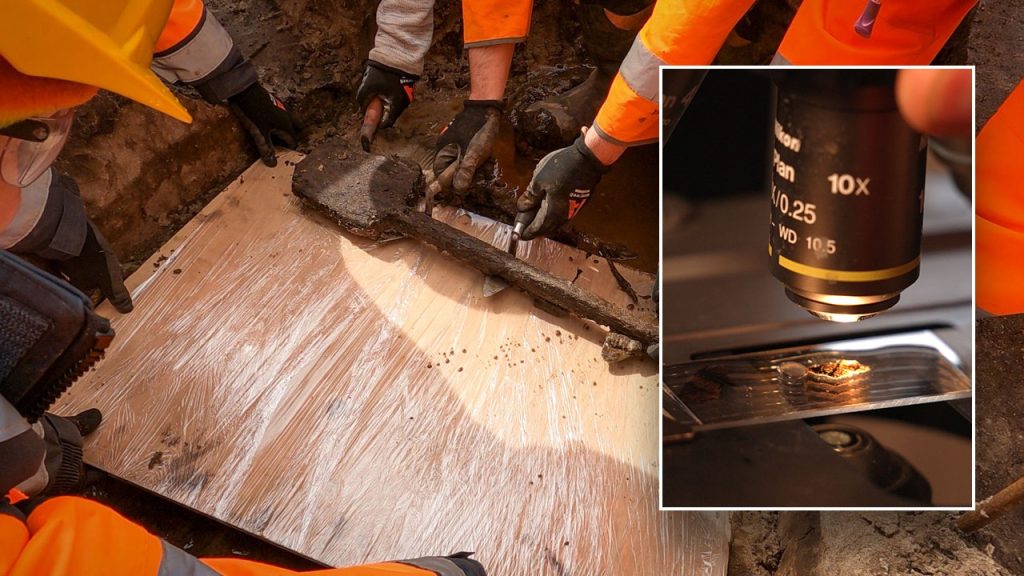Archaeologists working with Wessex Archaeology made a remarkable discovery during an excavation near Poole Harbour at a construction site in a wetlands habitat. The find was a wooden tool that is one of the oldest and most complete ever discovered in Britain. Initially, the excavation yielded few significant finds, but the discovery of the wooden tool changed everything. Preliminary dating suggested that the tool was from the Bronze Age, dating back to approximately 1500-1400 B.C. Radiocarbon dating confirmed that the tool was over 3,000 years old, making it a valuable and rare find.
The tool, made from a single piece of wood, is believed to have taken many hours to create and was likely an important and valuable tool over 3,000 years ago. The significance of the find lies in its rarity and the preservation of organic material like wood over such a long period of time. Similar discoveries of Bronze Age wooden tools in Britain are extremely scarce, with the last similar find dating back to 1875. The well-preserved condition of the tool is attributed to the waterlogged environment in which it was found. As a result, the wooden tool is now undergoing full conservation and further studies to unlock more information about its origins and the people who used it over 3,000 years ago.
The find sheds light on the ways in which ancient humans adapted to the challenges posed by their environment over thousands of years. Despite the seemingly untouched nature of the landscape, the discovery of the wooden tool suggests that humans have a long history of interacting with and shaping the environment to suit their needs. Archaeologists are eager to learn more about the relationship between the tool, the ditch in which it was found, and what else these discoveries can reveal about life at Arne Moors 3,000 years ago. The excitement surrounding the find stems from the potential insights it could provide into ancient human activities and lifestyles in the region.
The discovery of the ancient wooden tool represents a rare glimpse into the past and offers an opportunity to study and preserve a valuable piece of history. The careful conservation and further studies being undertaken on the tool will help to unlock more information about its origins, its use, and the people who created and used it thousands of years ago. This find adds to the growing body of archaeological evidence that highlights the ingenuity and resourcefulness of ancient civilizations, providing valuable insights for researchers and historians.
The importance of the find lies not only in its age and rarity but also in the context it provides about human activity in the region over 3,000 years ago. The discovery of the wooden tool demonstrates the importance of ongoing archaeological excavations and the potential for new discoveries to expand our understanding of ancient societies. The collaboration between archaeologists, researchers, and conservationists in studying and preserving the tool exemplifies the dedication and expertise required to unravel the mysteries of the past and bring them to light for future generations to learn from and appreciate.
In conclusion, the discovery of the ancient wooden tool by Wessex Archaeology offers a fascinating glimpse into the lives and activities of ancient inhabitants of the region over 3,000 years ago. The age, rarity, and well-preserved condition of the tool make it a significant find that will contribute valuable insights to our understanding of Bronze Age civilizations in Britain. Through careful conservation and ongoing studies, researchers hope to uncover more information about the tool, its purpose, and the people who created it. This discovery underscores the importance of archaeological research in revealing the rich history of human societies and the impact they have had on shaping the landscapes in which they lived.


